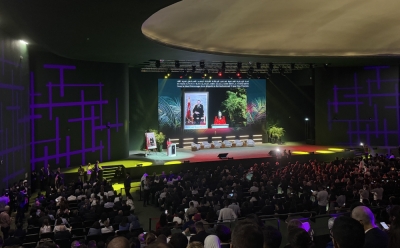Salima Naji continues to receive international distinctions. The latest is the Grande Médaille d’Or from the French Academy of Architecture. Quick Portrait of This Unconventional Architect
After being named a Chevalière des Arts et des Lettres in 2017, Salima Naji has garnered numerous national and international architecture awards, including the Holcim Award for Sustainable Development in Africa-Middle East in 2011, the Takrim of the Order of Architects of Morocco in 2007, and the Merit Award in 2019. Her work was also recognized in 2013 when she was shortlisted for the Aga Khan Award for Architecture with the project “Preservation of Sacred and Collective Oasis Sites.” This architect, whose name has long been associated with heritage preservation, recently received the Grande Médaille d’Or from the French Academy of Architecture.
Salima Naji has a solid academic background. Born in Rabat in 1971 to a Moroccan father and a French mother, she pursued her higher education in Paris at the École Nationale Supérieure d'Architecture de Paris-La Villette and the École des Hautes Études en Sciences Sociales. Her doctoral thesis in anthropology bore the evocative title: “The Warehouses of Baraka: From the Collective Granary to the Zawiya: Networks of the Sacred and the Process of Heritage Making in the Atlas and Pre-Saharan Morocco.”
Her choice to specialize in anthropology and, more specifically, in rehabilitation, stemmed from her first trip to Mali in 1995. Since then, Africa has remained the continent of her inspiration.
It is in the rural world, particularly in southern Morocco where she has been based since 2008, that she has chosen to work. As a pioneer, she contributes, through her advocacy in Morocco and abroad, to gradually evolving architectural practices and urban planning codes.
For nearly 20 years, she has multiplied participatory projects around Saharan collective architectures, ksours and collective granaries, to highlight these built environments within their landscapes. At the same time, she has refined all vernacular techniques for contemporary architecture with a social purpose (maternity wards, cultural centers, women's shelters, dormitories, etc.) to propose sustainable development by, with, and for the inhabitants, while maintaining a deep understanding of the territories.
In her unique architectural work, she mainly uses local materials such as stone, clay, and plant fibers for modern and sustainable reconstructions. Her practice is complemented by intense scientific activity. She is involved in many international action-research programs that question sustainability and the deep relationship between societies and their environment through the lens of architecture. She has also been a member of the scientific committee of the Berber Museum at the Jardin Majorelle since 2011 and develops significant reflections on cultural mediation and the transmission of built and archaeological heritage. Showcasing some of her restoration works, her website (salimanaji.org) is itself a virtual museum.
Salima Naji also has a rich bibliography. She has published several works on architecture, including The Ksar of Assa: Safeguarding a Port in Saharan Morocco in 2013, Collective Granaries of the Atlas in 2006, and Doors of Southern Morocco in 2003. Her latest book, published in 2019, is titled Architectures of the Common Good: For an Ethics of Preservation.











